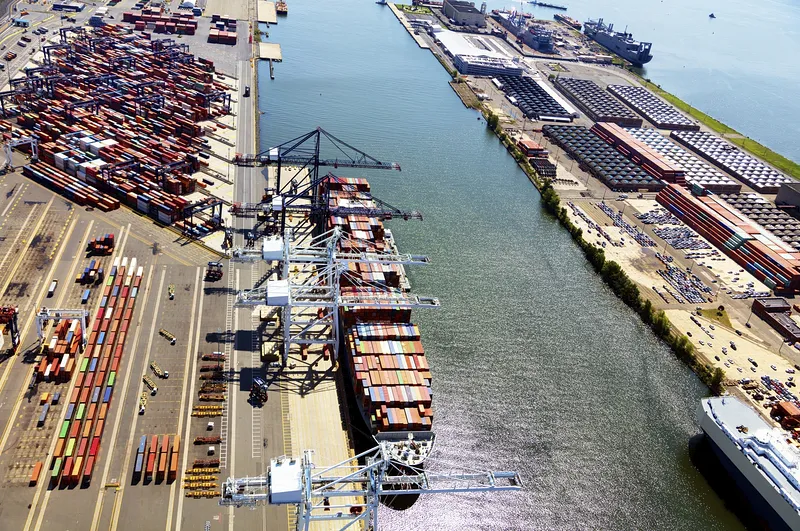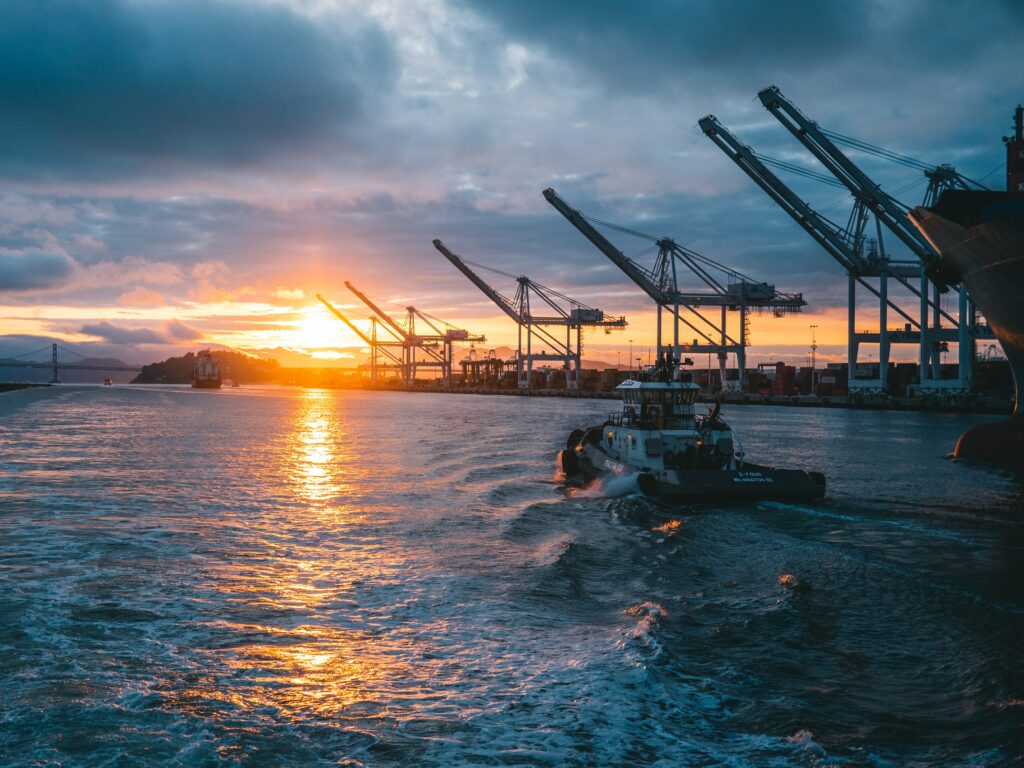
Today, the environmental impact of the shipping industry is at the center of conversation: how can we reduce our impact? How can we change our activities for the better? At Ellona we’re facing these concerns every day, especially in ports’ environment. This is why we are partnering with Sinay to tell you all about ports’ activities, their impact and the environmental standards that could change this sector for the better with the right tools!
Ports today, an essential way of transportation
We often forget it, but ports are today one of the most used method of transportation for businesses globally. Indeed, there are as many as 835 actives seaports and inlands worldwide. In 2017, they represented more than 80% of business in terms of volumes. With globalization, ships have become more than essentials as they are the link between contact, suppliers, companies and consumers. The biggest ports are located in Asia as most goods are supplied there, with Shanghai and Singapore being the biggest ones in the world in terms of cargo traffic.
As boats are the safest and cheapest way to transport goods, the number of ships is growing more and more every year. According to a study, cargo ships reached 2.13 billion deadweight tons in 2021, a +3% growth compared to 2020.
Besides that, ports and ships are very profitable. Only in the US, ports activities represented about 26% of the economy and $5.4 trillion in total economic activity in 2018.
Even though ports and ships are essential to most, if not all, businesses, they create major problems. Port congestion for example, creates great impacts on the environment, as ships can sometime wait up to two weeks at berth. But why is shipping so concerning for the environment?
What are ports’ environmental impact?
It is Important to recognize, ports alone do not cause all air pollution, as it is their activities that surround them which are the leading cause: including shipping, busy roads, etc. Ports operations can create global pollution and can impact air, water, land but also people. First things that comes to our mind when we think about transport and pollution is fuels emissions. Boats burn and reject fuel in the air with different pollutants such as :
- Particles maters (PM)
- Nitrogen oxides (NOx)
- Sulfur oxides (SOx)
- Volatile organic compounds (VOCs)
- And more air pollutants.
These pollutants are part of the causes of global warming, and are also responsible for the growth of cardiovascular problems or lung chronic diseases. On top of one in five deaths worldwide being caused by air pollution, oceans and sea wildlife are also victims of ports environmental impact. Accidentals fuel leaks, oil of bilge, and even paints (they contain organotin tributyltin, which is very toxic) can cause major pollution on water and threaten marine wildlife.
Moreover, ports generate lot of noise : research has shown that continuous anthropogenic noise in oceans was primarily generated by shipping. Industrial operations are also source of noise which is dangerous for wildlife but can also cause conflicts with local decision-makers and neighborhoods.
When it comes to fuel consumption, ships need about 700 l/h when docked and about 2000 l/h when moving. If compared to cars, ships’ fuel can contain up to 3.5% of sulfur, when is it mandatory for cars to only have fuels with only 0.001 % sulfur. Furthermore, 80% of ships use bunker fuel, low-grade heavy fuel oil which causes major damage on environments.
To reduce the environmental damage caused by shipping and port operations,, associations and states have started to regulate their activities.
What are the environmental standards for ports activities?

With the craze and the concern for global warming increasing, sustainable and green ports are now in real demand from decision-makers and companies to lower their impact. To do so, there are now certifications and standards to regulate ports and vessels’ pollution. A variation of the famous ISO 9001norm applies to ports and their environmental impact as the ISO 14001 norm. This certification is more a business asset than an actual environmental standard. This certification permits to establish what are ports’ impact and activities that will create major pollution, in order to set actions to lessen the impact and reduce pollution.
The International Maritime Organization has created an Energy Design Efficiency Index (EEDI) in order to promote the use of eco-friendly engines for boats to reduce Co2 emissions. This index is an opportunity for the ports and shipping industries to innovate and better their tools. Since 2013, it is mandatory for boats to meet the minimum energy efficiency level per kilometer of capacity established by the EEDI, and every five years the index gets lower and lower to achieve better environmental goals. Moreover, The International Maritime Organization is very concerned about ports and ships as they have set a goal to reduce 50% of international shipping emissions by 2050.
In some areas of the world, boats have to lower their impact and change their activities if they want to sail. It is the case in North America, in the Caraibean or in the Baltic sea, where ships can only navigate with a maximum of 0.1% sulfur in their fuel. These territories called “Emission Control Areas” aimed at protecting marine wildlife but also communities living on the coast from boats pollution. Thus, changing ports’ activities for more sustainability will permit to have more business opportunities as world’s maritime standards will be complied with. This is why Ellona and its partner Sinay are working hand in hand to promote the use of new technologies to analyze and remediate environmental nuisances. By using IoT devices and data, ports and ships will be able to reduce their impact and ease their relationships with local decision-makers.
To learn more, make sure to contact our Head of Sales Miguel Ecribano to get a demo of our WT1 for ports’ monitoring and remediation of emissions!